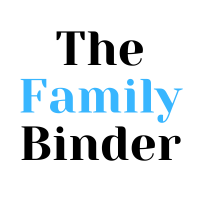Have you ever wondered if binder organization could be your secret weapon for success in 2025? Many students and professionals know the stress of flipping through messy binders, losing important notes, and wasting precious time.
This guide will deliver practical, up-to-date strategies for binder organization tailored to the challenges of 2025. You'll discover how to choose the right binder, set up your system, use advanced hacks, integrate digital tools, and maintain a clutter-free routine. Get ready to transform your binder organization and unlock greater productivity, sharper focus, and true peace of mind.
Choosing the Perfect Binder for 2025
Selecting the right binder is the foundation of effective binder organization. With so many options available, knowing what to look for can save you time, frustration, and even money in the long run.
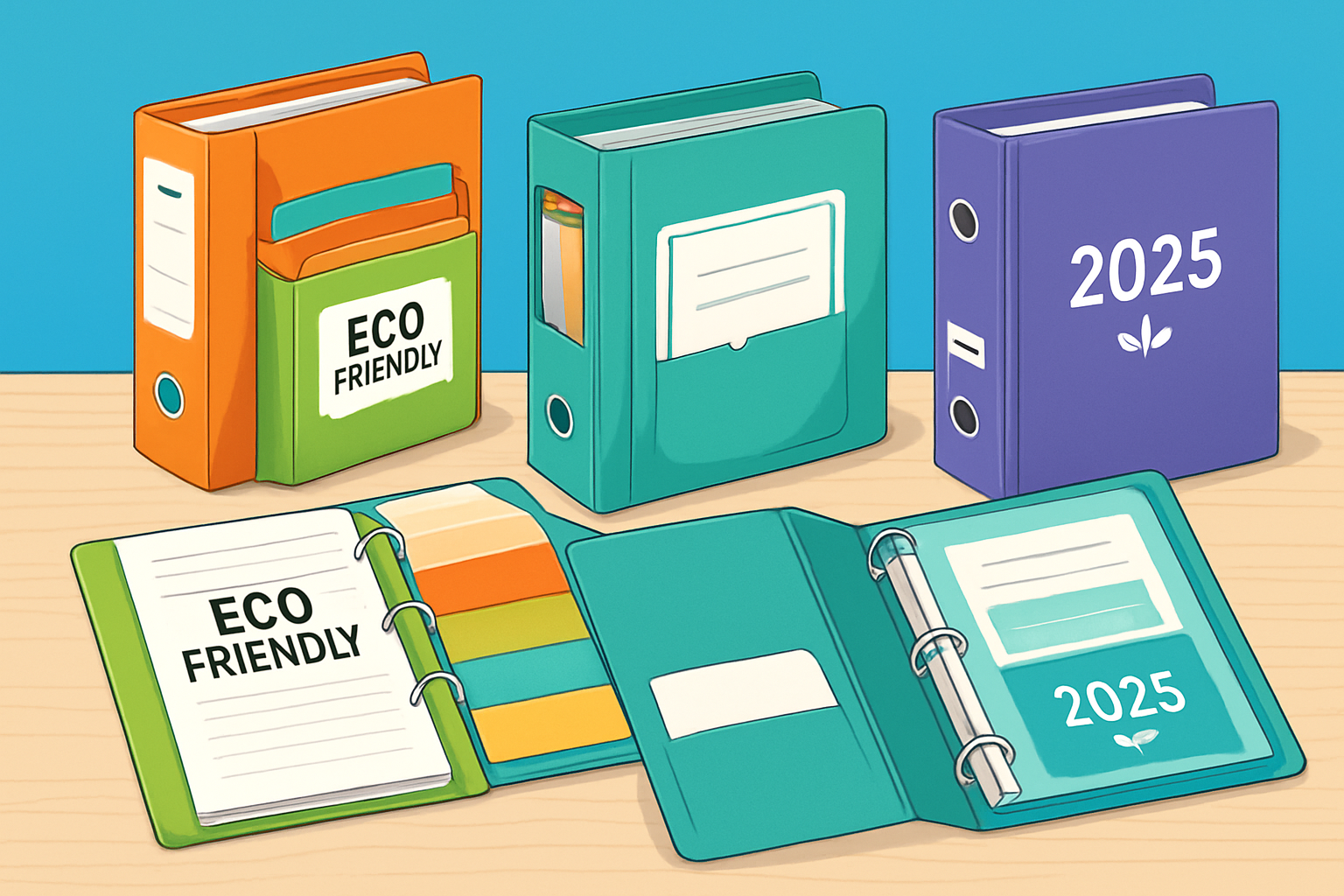
Understanding Binder Types and Materials
Binder organization starts with the right format. Traditional 3-ring binders remain a staple, offering straightforward functionality for most needs. Accordion and ringless styles are gaining popularity for their flexibility, while hybrids combine both for ultimate versatility.
When comparing materials, consider durability and eco-friendliness. Recycled plastics and vegan leathers are trending in 2025, appealing to those who want sustainability without sacrificing style. Hard covers protect contents better but add weight, while soft covers are lighter but may not last as long.
For example, Staples’ Better Binder features an expandable spine, adapting as your workload grows. Not sure where to begin? The 12 best binders for documents post reviews top choices for every need and style this year.
Always match your binder to your daily routine—whether for school, work, or home—to ensure your binder organization stays seamless.
Size and Capacity: Matching Your Needs
Binder organization is only effective if your binder fits your workload. Standard sizes range from 1-inch (holding about 175 sheets) to 3-inch (up to 600 sheets). Think about the number of subjects, projects, or clients you manage.
If you anticipate growth, opt for expandable spine options. These let you scale up mid-year without buying a new binder. Imagine starting a semester with a slim binder, then upgrading as assignments pile up. This flexibility is crucial for busy students and professionals who need their binder organization to adapt quickly.
Use this quick table to estimate your needs:
| Binder Size | Capacity (Sheets) | Best For |
|---|---|---|
| 1-inch | 175 | Light daily use |
| 2-inch | 375 | Multiple subjects |
| 3-inch | 600 | Large projects/files |
Accessibility and Ergonomics
A successful binder organization system should be easy to use. Look for binders with easy-open rings, especially if you reference documents frequently. D-ring mechanisms hold more paper and keep pages flatter compared to round rings, making flipping through notes smoother.
If you’re left-handed, test ring placement and opening mechanisms for comfort. Lightweight binders are essential for those always on the go; they reduce strain without sacrificing capacity. Portable designs with reinforced spines or handles can make daily transport much easier.
Prioritizing accessibility ensures your binder organization doesn’t slow you down.
Customization and Personalization
Binder organization becomes more enjoyable when your binder reflects your personality. Use colored covers, scrapbook paper, or washi tape to make it stand out. Label the spine and dividers clearly for instant recognition.
A fun customization idea: add a 4x6 photo poly envelope inside the front cover for your schedule or quick-access items. Personal touches like inspirational quotes or favorite stickers can make you more motivated to keep your binder organization system up-to-date.
When your binder feels uniquely yours, you’re more likely to use it consistently and efficiently.
Step-by-Step: Setting Up Your Binder System
Ready to level up your binder organization for 2025? A well-structured binder isn’t just about neatness—it’s about designing a system that actually works for your needs. Follow these five actionable steps to build a binder setup that keeps you productive, focused, and stress-free.
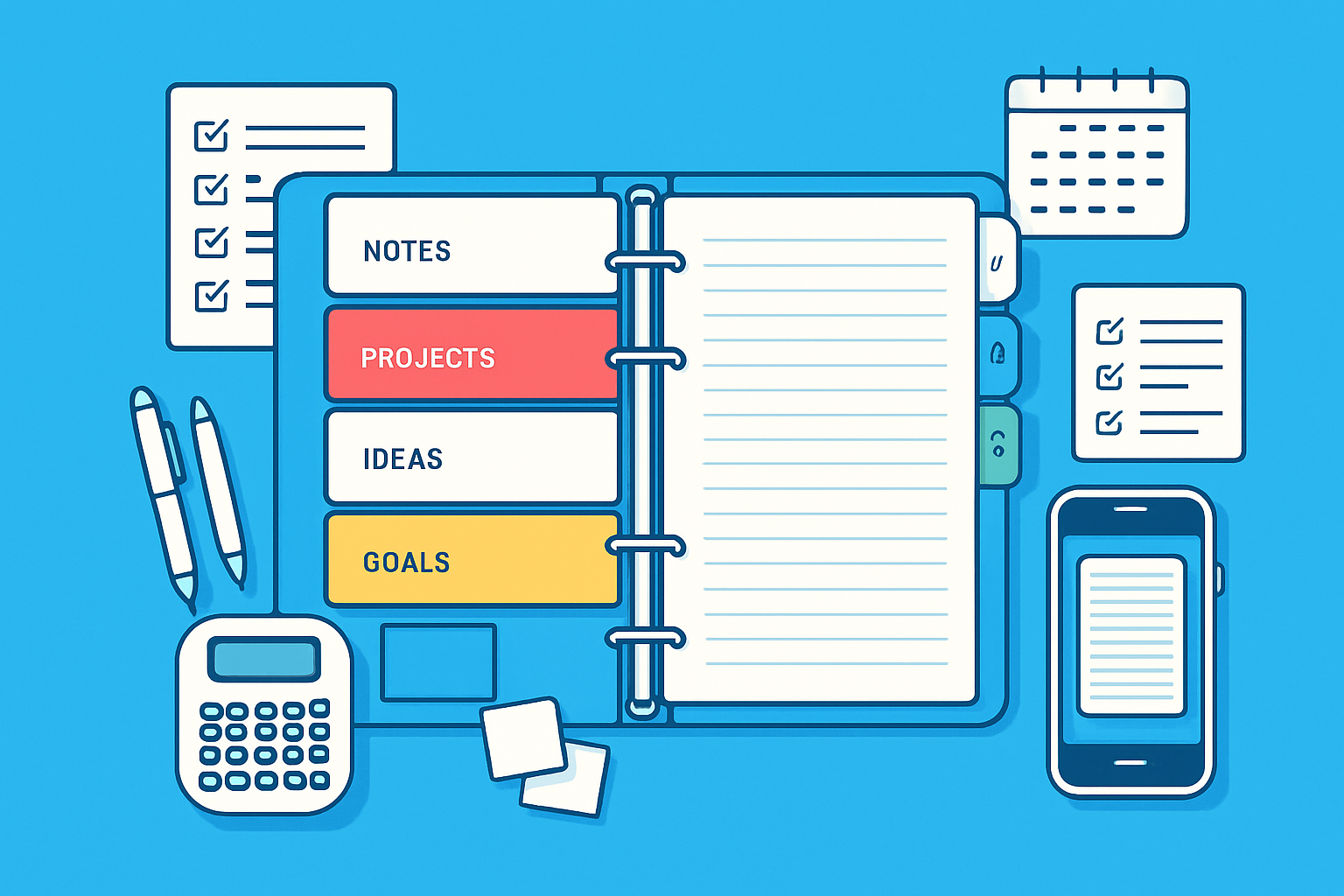
Step 1: Gather Essential Supplies
Every effective binder organization journey starts with the right tools. Gather these essentials:
- A sturdy binder (1-inch, 2-inch, or expandable)
- Dividers (color-coded, 5-tab, 8-tab, or A-Z)
- Sheet protectors for important documents
- Poly pockets for loose items
- Label maker or pre-printed labels
- Notebook or lined paper
- Pens, highlighters, and sticky notes
Investing in quality supplies ensures your binder organization system lasts all year. Cheap dividers may rip, and low-quality binders might fall apart just when you need them most.
Consider products like Avery color-coded dividers for easy navigation and poly pocket dividers to keep small items secure. If you’re new to setting up a binder or want more step-by-step visuals, check out this How to Organize a Looseleaf Binder guide for practical tips.
With your supplies ready, you’re already halfway toward mastering binder organization.
Step 2: Create a Logical Structure with Dividers
Now, it’s time to map out your binder organization. Start by choosing the right dividers:
| Divider Type | Best For | Example Use |
|---|---|---|
| 5-tab | Few subjects/projects | School classes |
| 8-tab | Multiple categories | Work or home management |
| 12-tab | Monthly or detailed | Year-long tracking |
| A-Z | Alphabetical sorting | Contacts, references |
Label each divider clearly—by subject, project, priority, or month. Use a label maker for consistency or print your own templates. Add a table of contents page at the front so you can quickly jump to any section.
For extra efficiency, make backup copies of your divider cover pages. This way, if you ever need to reorganize, you won’t have to start from scratch. Logical structure is the backbone of binder organization, so take your time to get it right.
Step 3: Organize Papers and Documents
With your framework in place, begin sorting your papers. Divide everything into clear categories: notes, assignments, handouts, and reference materials. This is the heart of binder organization—grouping similar items together for easy access.
For those pesky unpunched papers, use built-in or add-on poly pockets. This keeps your binder tidy until you have time to hole-punch and file them properly.
Consider using different colored paper for various types of notes (blue for lectures, yellow for brainstorming, etc.). This visual cue speeds up your search and strengthens your binder organization system.
Short review sessions each week will keep your papers sorted and prevent clutter from sneaking in.
Step 4: Add Storage Solutions
Bulky items and odd-sized papers can quickly derail binder organization if not managed well. Add gusseted binder pockets to store notebooks, brochures, or thicker documents.
Keep loose items—sticky notes, receipts, or small booklets—in adhesive poly envelopes or zippered pouches. These additions prevent important items from getting lost at the bottom of your bag.
Here are smart storage solutions you can try:
- Gusseted pockets for notebooks or handouts
- Zippered pouches for pens and accessories
- Adhesive poly envelopes for personal notes or reminders
A well-equipped binder means you’re always prepared, no matter what the day throws at you.
Step 5: Personalize for Motivation and Efficiency
Personal touches make binder organization enjoyable and sustainable. Decorate the cover and spine with scrapbook paper, stickers, or your favorite colors. Slide a 4x6 photo into a poly envelope for instant inspiration.
Add motivational quotes, goal sheets, or progress trackers to keep your spirits high. Place your school or work schedule at the very front so you always know what’s next.
Personalization isn’t just about looks—it boosts your motivation to maintain your binder organization system all year long.
Advanced Organization Hacks for Maximum Efficiency
Ready to take your binder organization to the next level? These advanced hacks are designed for anyone who wants to maximize efficiency, reduce clutter, and keep their system running smoothly all year long. Whether you’re managing academic notes, business projects, or family life, these tips will help you streamline your binder organization for 2025 and beyond.
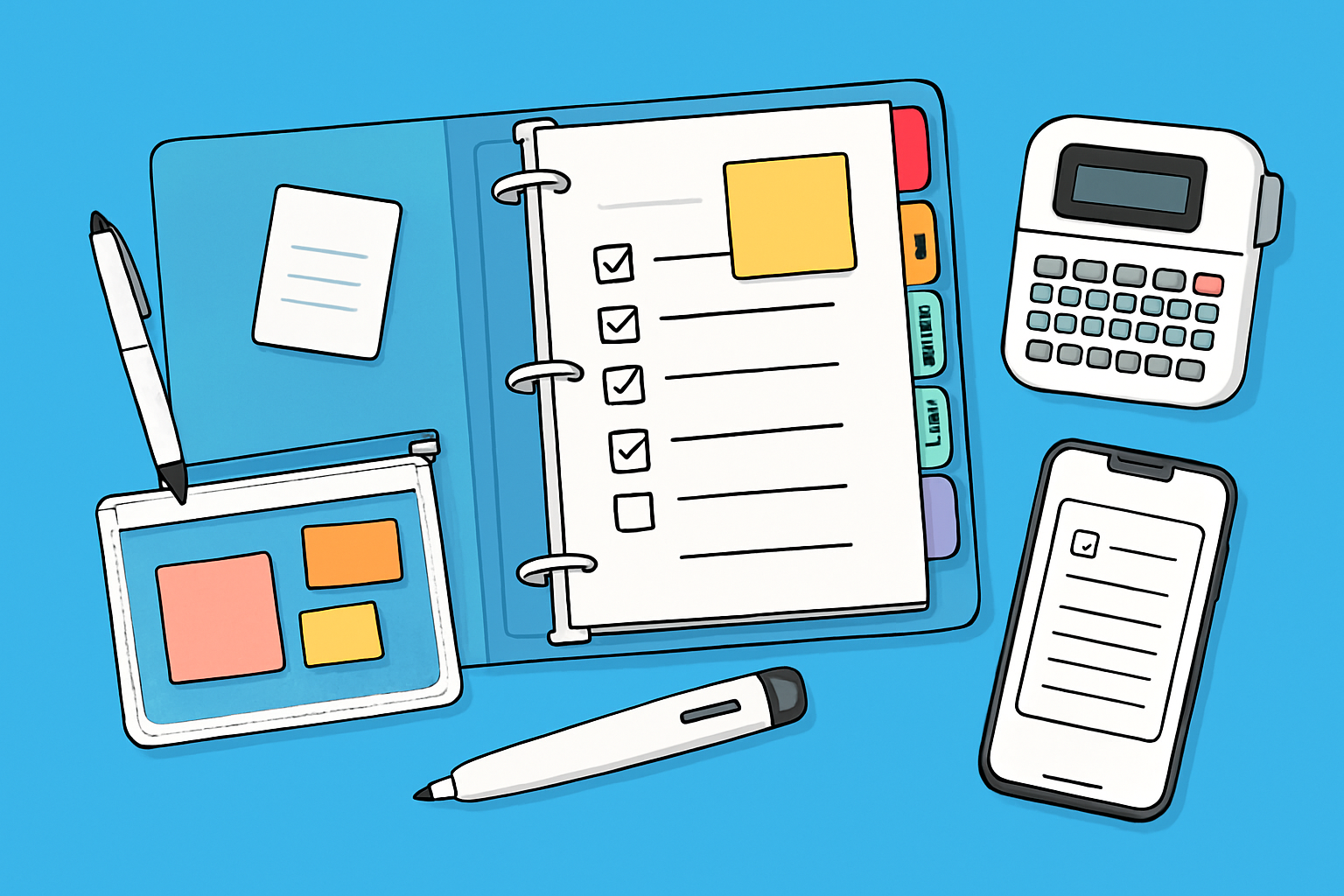
Time-Saving Labeling and Indexing Techniques
Labeling is the backbone of effective binder organization. Invest in a label maker for crisp, easy-to-read tabs. This ensures you can find what you need at a glance. D-ring binders work especially well with large, labeled dividers, while round rings suit smaller projects.
Try creating a master index page at the front of your binder. This overview lists all sections, making navigation effortless. If you juggle multiple binders, keep a digital label template handy for quick updates or when your system changes mid-year.
For even greater efficiency, explore advanced home organization systems that blend physical and digital tools—check out this advanced home organization system for more inspiration. Remember, a well-labeled binder organization system saves time and reduces stress every day.
Incorporating Checklists and Planners
Add printable checklists, calendars, and habit trackers to your binder organization setup. Start by placing a to-do list or weekly planner at the front of each section. This keeps your priorities visible and actionable.
Project management sheets are a must for ongoing assignments or long-term goals. Use habit trackers to monitor progress on daily routines, from studying to work tasks. Insert a calendar page each month to visualize upcoming deadlines and events.
A weekly review checklist ensures your binder organization stays current. Set aside a few minutes at the end of each week to update tasks, purge completed items, and plan for the next week. This small routine can have a huge impact on your productivity.
Managing Loose Papers and Non-Standard Items
Loose papers and odd-sized documents can quickly turn binder organization into a headache. Use sheet protectors for brochures, photos, or anything that doesn’t fit standard paper sizes. Zippered pouches are perfect for business cards, receipts, or small booklets.
If you often receive unpunched handouts, stash them in a front poly pocket until you have time to punch and file them. Color-code these pockets for different types of materials—urgent, to file, or reference.
Teachers and professionals alike benefit from keeping a dedicated section for “unfiled” items. This keeps your main sections tidy and ensures nothing gets lost in the shuffle. With these tools, your binder organization will handle any paper challenge.
Binder Organization for Special Purposes
Think beyond school or work—binder organization is perfect for specialized needs. Create a home management binder for bills, schedules, and emergency contacts. Event planners can dedicate sections to budgets, guest lists, and timelines.
Creative professionals and students may want a portfolio binder to showcase work samples or project milestones. For families, try a shared binder with color-coded tabs for each member, making it easy to coordinate schedules and responsibilities.
College applicants or job seekers can set up a binder with sections for applications, resumes, and interview prep. Adapting binder organization to your unique life stage ensures your system always matches your needs.
Maintenance Routines: Keeping Your Binder Clutter-Free
Even the best binder organization system needs regular upkeep. Set a weekly or monthly review schedule to keep clutter at bay. Use this time to remove outdated materials, archive important documents, and refresh your dividers or labels.
If your binder starts to feel overstuffed, rotate older materials into a separate archive binder. This keeps your main binder light and portable. Don’t forget to reset your system mid-semester or after big projects—you’ll thank yourself later.
Staying committed to binder organization pays off in productivity and peace of mind. With a solid maintenance routine, your binder will always be ready to support your goals—no matter how busy life gets.
Integrating Digital Tools with Physical Binder Organization
Struggling to keep up with the demands of modern binder organization? The secret to staying on top of everything in 2025 is blending digital efficiency with your tried-and-true paper system. Hybrid organization is more than a buzzword—it's a practical approach that helps you capture, sync, and manage information wherever you are.
Imagine quickly scanning handwritten notes into your phone, accessing important files from the cloud, or linking your physical planner pages to your digital calendar. By integrating digital tools with your binder organization, you can eliminate clutter, reduce stress, and always know where to find what you need.
This section shows how to leverage the best digital tools, apps, and smart gadgets to keep your binder organization system at peak performance, whether you're a student, professional, or managing a busy home.
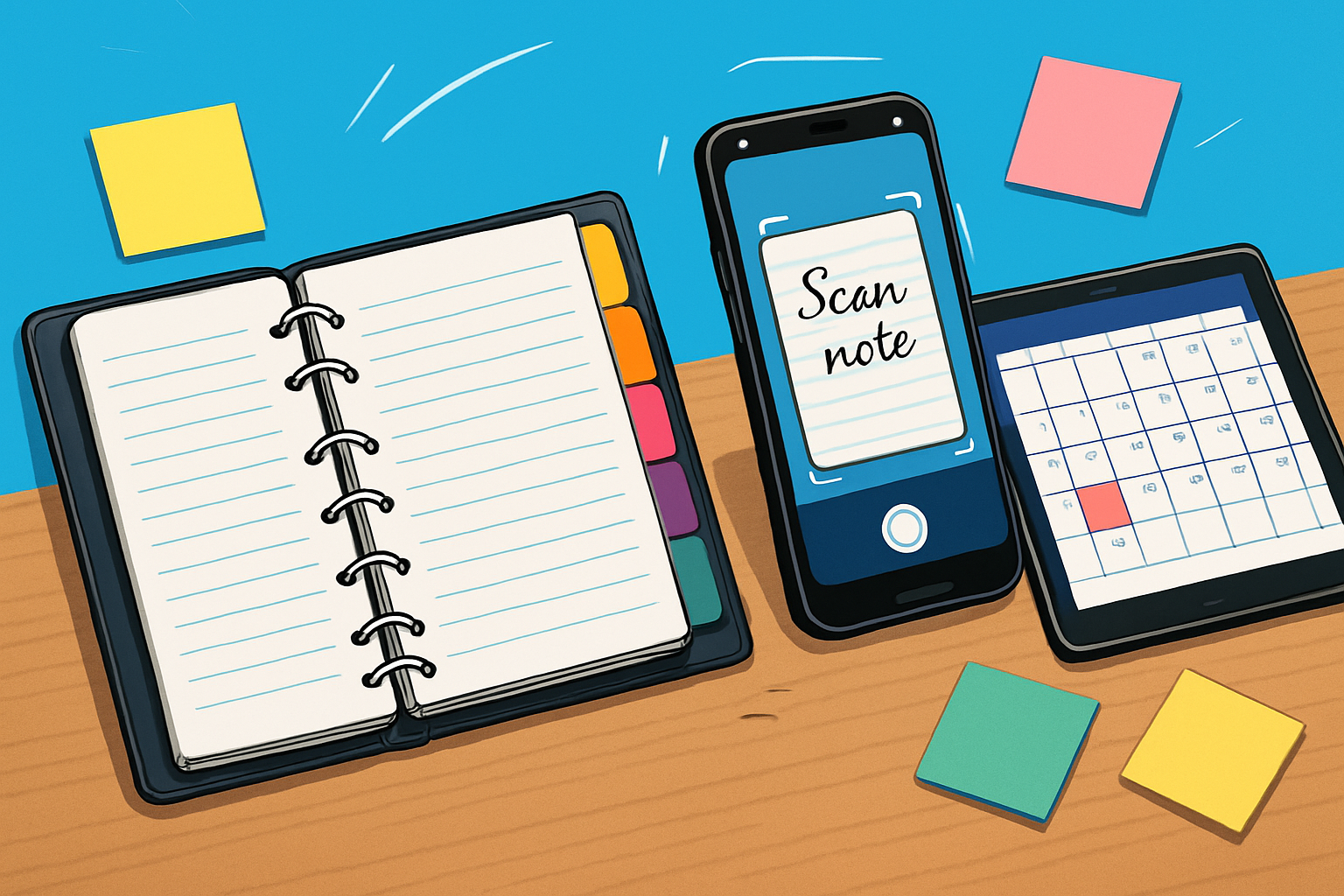
The Rise of Hybrid Organization in 2025
Binder organization in 2025 is all about flexibility. Traditional paper binders still have their place for note-taking, brainstorming, and quick reference. But digital tools now let you extend those benefits beyond the page.
Apps like Evernote, OneNote, and Notion allow users to capture ideas, scan documents, and organize them by subject or project—mirroring your physical binder tabs. Hybrid binders, with built-in pockets for tablets or smartphones, make it easy to keep digital and paper resources together.
Here's a quick comparison:
| System | Pros | Cons |
|---|---|---|
| Physical | Tangible, easy to flip, no batteries | Can get bulky, hard to search |
| Digital | Searchable, portable, shareable | Screen fatigue, tech issues |
| Hybrid | Best of both, flexible, up-to-date | Requires planning, learning curve |
For educators and professionals looking to master these strategies, the Organized Binder's 2025 Educators Summit offers expert insights into the future of binder organization.
Digitizing Key Documents for Backup
Protect your binder organization from loss or damage by digitizing important documents. Use your smartphone camera or a dedicated scanning app, such as Adobe Scan or CamScanner, to create high-quality digital copies of paper notes, handouts, or reference sheets.
Once scanned, upload files to a secure cloud service like Google Drive or Dropbox. This ensures you can always retrieve your materials—even if your binder is misplaced. For handwritten notes, optical character recognition (OCR) makes it possible to search and sort your content digitally.
Try this workflow:
- Scan new notes weekly.
- Organize digital files using the same categories as your physical binder.
- Back up assignments, receipts, and key resources.
This approach not only streamlines binder organization but also gives peace of mind knowing your information is safe and accessible anywhere.
Syncing Calendars and Deadlines
Bridging the gap between your physical planner and digital tools can supercharge binder organization. Start by adding key dates from your paper calendar into Google Calendar or Outlook. Set reminders for assignments, meetings, or project milestones.
For an extra layer of integration, print QR codes and place them on relevant binder pages. Scanning a QR code with your phone can instantly pull up related digital resources, shared folders, or online checklists.
Modern gadgets also boost efficiency:
- Portable label printers for quick tab updates
- Digital sticky notes that sync with your phone
- Smart pens that digitize handwritten notes in real time
Deciding between a fully digital or hybrid binder organization system? Hybrid systems offer flexibility and backup, while fully digital solutions are best for tech-savvy users who prefer everything in the cloud.
No matter your style, integrating digital tools ensures your binder organization keeps pace with the demands of 2025.
Binder Organization for Different Life Stages and Needs
Looking for a binder organization system that adapts as your life evolves? The right binder can become a personal assistant—whether you’re a student juggling classes, a professional managing projects, a parent running a household, or a hobbyist collecting ideas. Let’s break down how binder organization can be tailored for every stage and need.
Students: Academic Success Strategies
Students thrive when their binder organization system is easy to use and flexible. Start by dividing your binder into sections for each subject or class. Use color-coded tabs to make flipping between math, science, and language arts effortless.
Include pockets for handouts, and keep a master schedule at the front to track deadlines. Lined paper and clear dividers help keep notes legible and assignments in order. Don’t forget to personalize your cover with your name and favorite quotes for a motivational boost.
- Color-code by subject for quick access
- Use sticky notes for reminders
- Store returned assignments in a dedicated section
With binder organization, studying for exams becomes less stressful and more productive.
Professionals: Work and Project Management
For professionals, binder organization means having information at your fingertips during meetings or project reviews. Choose a durable binder with labeled sections for clients, projects, and meeting notes. Insert business card holders and zipper pouches for receipts or small items.
A master index at the front can save valuable time. Incorporate action item trackers and follow-up logs to keep projects moving forward. For more expert advice on keeping your work materials streamlined, check out these Professional Tips for Binder Organization.
- Create a section for each client or project
- Add a calendar for milestone tracking
- Use sheet protectors for important contracts
Investing in binder organization helps professionals stay sharp and prepared.
Home and Family Management
A well-crafted home management binder is a game-changer for busy families. Use sections for bills, meal planning, cleaning schedules, and emergency contacts. Laminated checklists and monthly calendars make it easy to delegate chores and keep everyone on the same page.
Store warranties, school forms, and medical info in sheet protectors for quick retrieval. If you want a step-by-step guide, explore this resource on home management binder organization.
- Include a family calendar and contacts
- Add pockets for coupons or receipts
- Keep emergency plans front and center
Binder organization brings peace of mind, ensuring nothing important falls through the cracks.
Specialized Binders: Hobbies, Events, and Travel
Binder organization isn’t just for work or school. Creative binders can hold recipes, event plans, or travel itineraries. Use themed dividers and plastic sleeves for tickets, inspiration, and mementos.
For event planning, set up a timeline and checklist section. Travelers can store maps, confirmations, and packing lists. Hobbyists might dedicate sections for patterns, instructions, or sketches.
- Create a binder for each major hobby or trip
- Use pockets for keepsakes and souvenirs
- Personalize with stickers and cover art
Binder organization transforms hobbies and adventures into organized, memorable experiences.
Troubleshooting Common Binder Organization Challenges
Struggling to keep your binder organization on track? You’re not alone. Even the most dedicated planners face hurdles like paper clutter, lost documents, or a lack of motivation. Let’s break down the most common challenges and share actionable solutions to keep your binder working for you in 2025.
Overcoming Paper Clutter and Overstuffed Binders
Is your binder bulging with loose papers? It’s a clear sign to declutter. Start by sorting your documents into keep, archive, or toss piles. Rotate materials seasonally or by project cycle to avoid overload.
A simple table can help:
| Problem | Solution |
|---|---|
| Too many papers | Archive past work |
| Bulky items | Use gusseted pockets |
| Unsorted notes | Add more dividers |
For home or family binders, check out these Decluttering with a household binder tips to reduce clutter and streamline your system.
Preventing Lost or Damaged Documents
Missing or torn papers can derail your binder organization. Use sturdy sheet protectors for important handouts and poly pockets for receipts or small items. Always label each section clearly—returning misplaced items becomes a breeze.
Consider color-coded tabs so every document has a designated home. For extra protection, store backup copies of key papers digitally. This way, your physical and digital systems work together to safeguard your information.
Staying Motivated to Maintain Your System
Binder organization isn’t a one-and-done task. Set regular check-ins—weekly or monthly—to tidy up, remove outdated materials, and refresh your setup. Celebrate small wins by rewarding yourself after each review.
Involve family or teammates for accountability. Personalize your binder with inspiring quotes, stickers, or colorful covers to make organization something you look forward to. Remember, a visually appealing system can spark motivation when your energy dips.
Adapting Your System When Your Needs Change
Life changes—so should your binder organization. Whether you’re switching jobs, starting a new school year, or handling a major project, reevaluate your sections and supplies. Flexible systems with removable dividers or expandable spines make reorganizing simple.
Upgrade your binder mid-year if it’s getting cramped. Use erasable labels or digital templates for tabs, making it easy to adjust as your workload shifts. Embrace these changes as opportunities to optimize your productivity.
Real-World Examples and Success Stories
Students, professionals, and families have all transformed their productivity with binder organization. Take inspiration from organizing expert Alejandra Costello, who shares practical video tips for binder setup and maintenance. Creative solutions—like those found in these DIY Binder Organization Ideas—show how personal touches and smart hacks can turn chaos into order.
No matter your starting point, a well-organized binder is within reach. Troubleshoot, adapt, and enjoy the peace of mind that comes with a system built for your success.
If you’re ready to take your binder organization to the next level and make 2025 your most organized year yet, why not put these strategies into action with a tool designed for real-life success? The Family Binder brings everything together—finances, home info, kids, pets, even your online accounts—into one secure, easy-to-use planner. It’s printable, customizable, and built to help you stay calm, prepared, and focused, no matter how busy life gets. You’ve got the tips—now get the system that makes it simple.
Download Now
